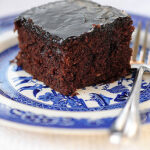The recent release of a Mother’s Day photograph of Princess Kate and her children, intended to reassure the public amidst her absence from royal duties, has instead ignited a media firestorm. Major news agencies, including The Associated Press (AP), Reuters, and AFP, retracted the image, citing manipulation that violated their photo standards. The AP specifically pointed to “inconsistencies in the alignment of Princess Charlotte’s left hand” as the reason for their decision.
Following the photo’s withdrawal, Princess Kate issued a public apology, acknowledging that she occasionally experiments with editing as “many amateur photographers” do.
Like many amateur photographers, I do occasionally experiment with editing. I wanted to express my apologies for any confusion the family photograph we shared yesterday caused. I hope everyone celebrating had a very happy Mother’s Day. C
— The Prince and Princess of Wales (@KensingtonRoyal) March 11, 2024
This incident has not only fueled existing speculation about Princess Kate’s health and whereabouts since her last public appearance at Christmas and subsequent abdominal surgery in January, but it has also triggered a critical examination of journalistic ethics in the digital age. To delve deeper into the implications of this event, we spoke with Kate Sweeney, a former journalist and current Professor of Practice in UVA’s Department of Media Studies.
Q. What harm does publishing a doctored photo by a respected media outlet cause to the public?
A. Publishing a manipulated image erodes the foundation of truth in news reporting. While widespread use of filters and editing on platforms like Instagram might normalize altered images for the public, it simultaneously cultivates distrust in news sources. In an era already marked by skepticism towards media, such actions are particularly damaging.
For journalists, maintaining the principle of truth-seeking is paramount. Misleading the public through a doctored photo directly contradicts this core ethic. Each instance of misleading content chips away at the already fragile trust between the public and the news media. This breach of trust has far-reaching consequences, impacting the credibility of all news organizations.
Q. What is your assessment of The Associated Press’s decision to retract the Princess Kate photo?
A. The Associated Press took the necessary and ethically sound action by retracting the image. Transparency is a cornerstone of journalistic integrity. They clearly communicated the issue, explained their reasons for withdrawing the photo, and avoided any attempt to conceal the situation. This proactive approach is crucial.
Journalism’s fundamental tenets—seeking truth, acting independently, minimizing harm, and ensuring transparency—were clearly violated by the doctored photograph. The image’s inaccuracy and misleading nature necessitated its removal. The AP’s subsequent transparency in explaining their decision is a vital step towards preserving public trust in journalism, demonstrating accountability and commitment to factual reporting.

